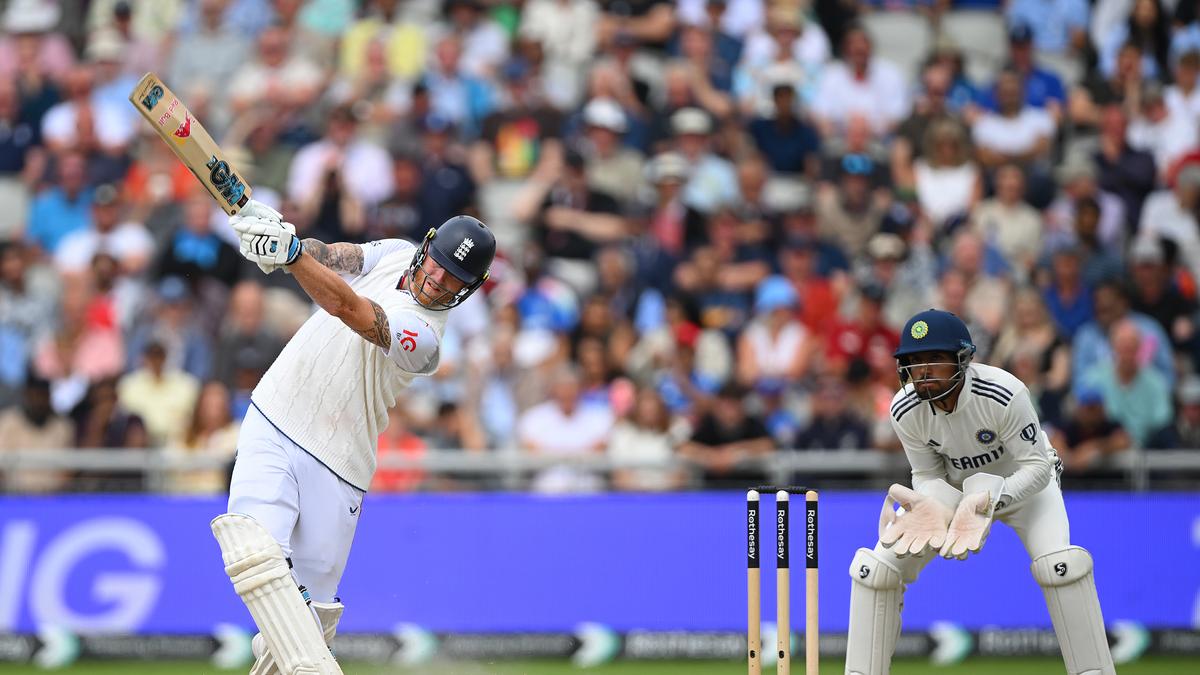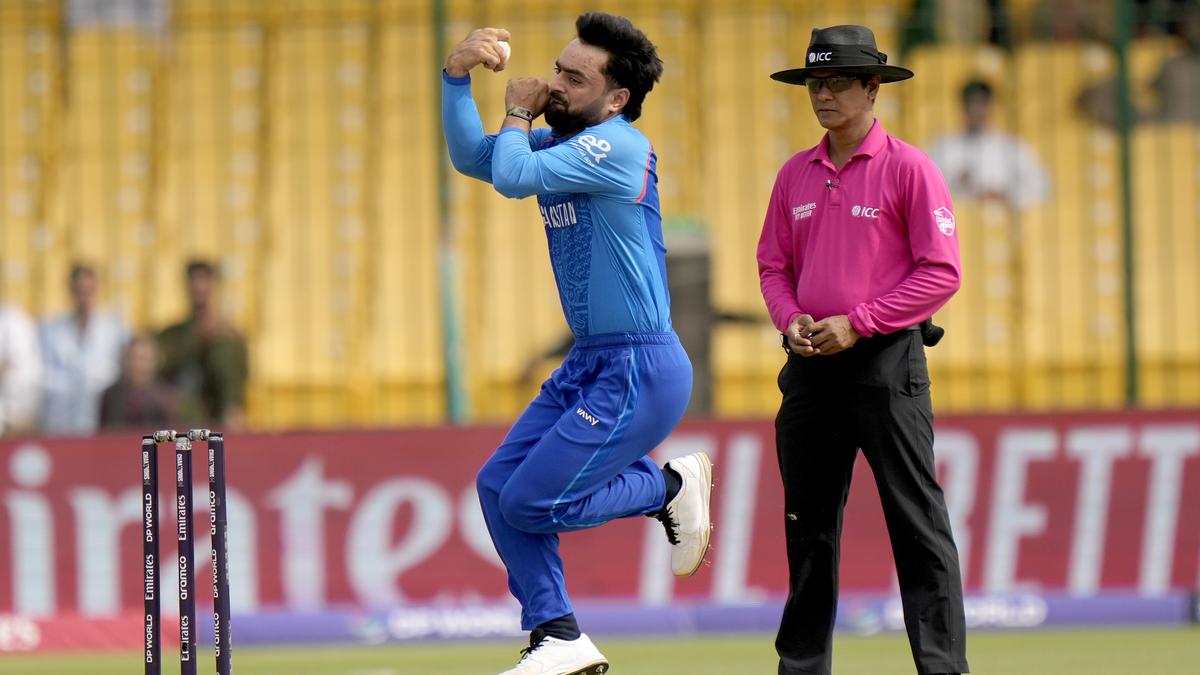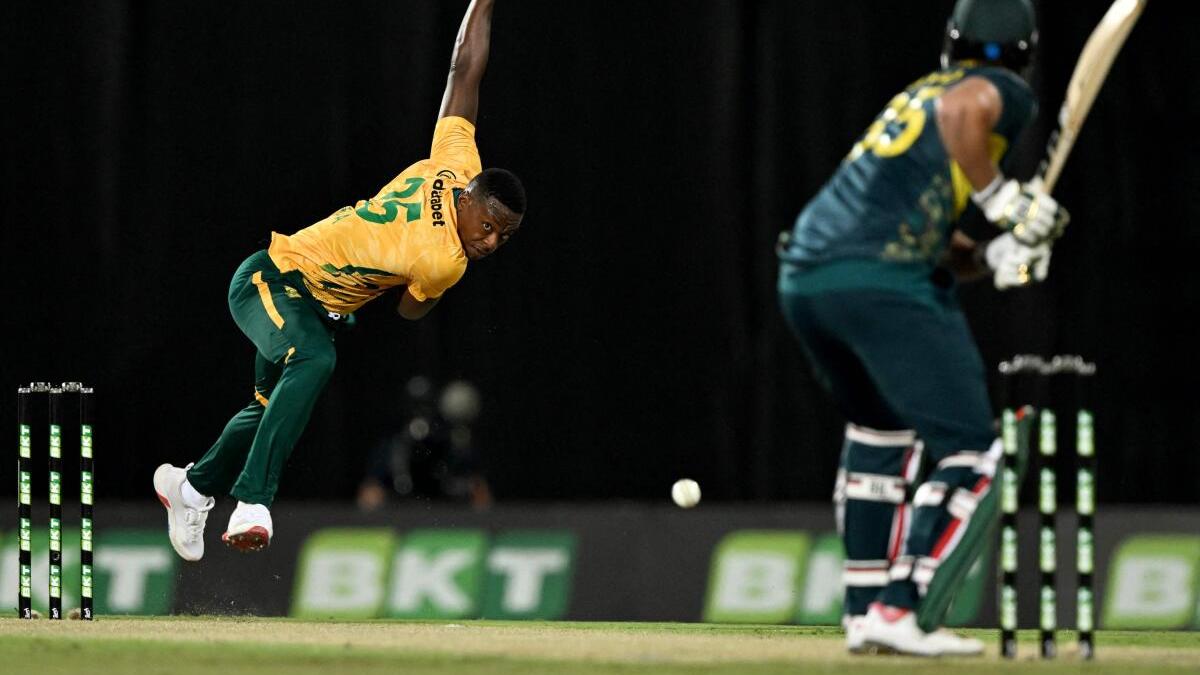The first-ever Anderson–Tendulkar Trophy witnessed a dramatic conclusion as India edged out England by six runs in the fifth Test at The Oval to level the series 2–2.
The victory at The Oval — India’s narrowest win while bowling last in a Test — was a fitting finale to a see-saw contest that stretched across all 25 allocated days of the series.
While there was no shortage of drama both on and off the field, one constant across the five matches was the relative ease of run-scoring.
On placid pitches that defied conventional expectations of swing- and seam-friendly English conditions, batters flourished while bowlers laboured for breakthroughs.
The final aggregate run tally stood at 7,187 — the second-highest in a bilateral Test series. Only the 1993 Ashes, in which England and Australia amassed 7,221 runs across six Tests, has seen more.
England and India averaged 41.30 runs per wicket, the highest in any series of five or more Tests in over 16 years. The top-order batters from both sides combined for a remarkable average of 49.37.
“We came into the series knowing we’d encounter flatter tracks and fast scoring. We were mentally prepared for a grind,” said India’s bowling coach, Morne Morkel.
This Anderson-Tendulkar Trophy also produced 21 individual hundreds — the joint-most in a Test series, equalling Australia’s tour of the West Indies in 1955.

Four of those centuries came from Indian captain Shubman Gill, who scored a colossal 754 runs — the most by an Indian skipper in a Test series and second only to Sunil Gavaskar’s 774 against the West Indies in 1971 for the most by any Indian in a long-format series.
The run glut was not just about volume. The series run rate of 3.86 was the second-highest for a five-plus-Test series, behind only the 2023 Ashes (3.93).
The freedom with which batters scored was also reflected in the number of sixes struck. England and India combined for 81 maximums — bettered only once, in the 2024 England–India series, which saw 102.
While batters from both sides deserve credit for their execution, their feats were undoubtedly aided by increasingly docile English pitches, which have become integral to England’s home Test strategy.
Since Brendon McCullum’s appointment as head coach in 2022, England has played at six home venues — Lord’s, Headingley, The Oval, Old Trafford, Trent Bridge and Edgbaston.
Four of these have undergone a marked transformation. Once offering an even contest between bat and ball, they have become heavily tilted towards batting.
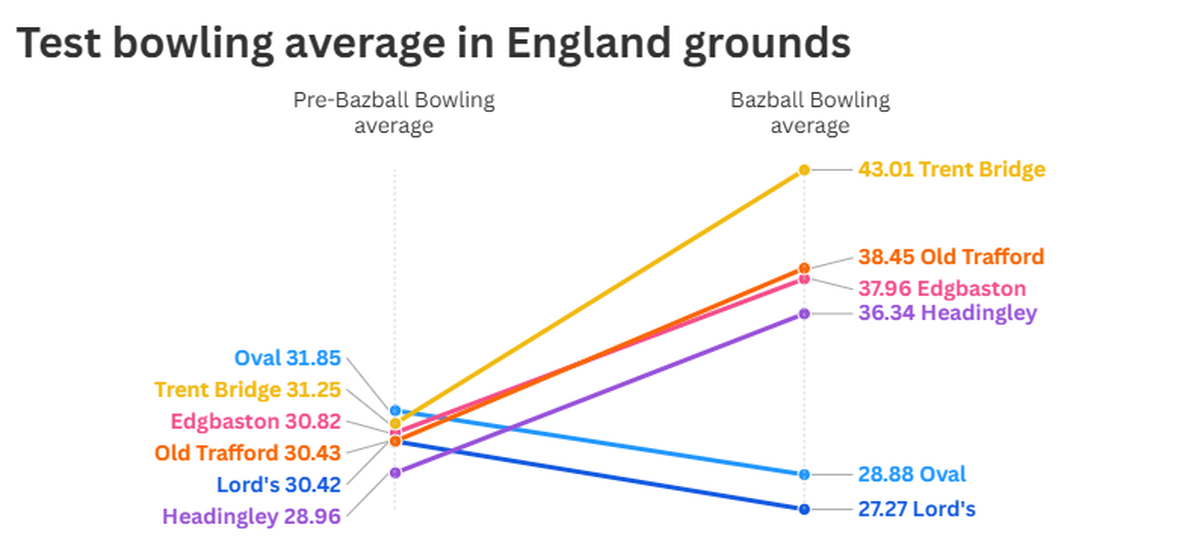
This aligns with McCullum’s philosophy of hyper-aggressive batting, reflected in the rising scoring rates at every English Test ground.
Trent Bridge has experienced the most dramatic shift. Before the advent of ‘Bazball’, bowlers there averaged 31.25 while conceding 2.64 runs per over. Since then, the average has ballooned to 43.01, with the run rate soaring to 4.27.
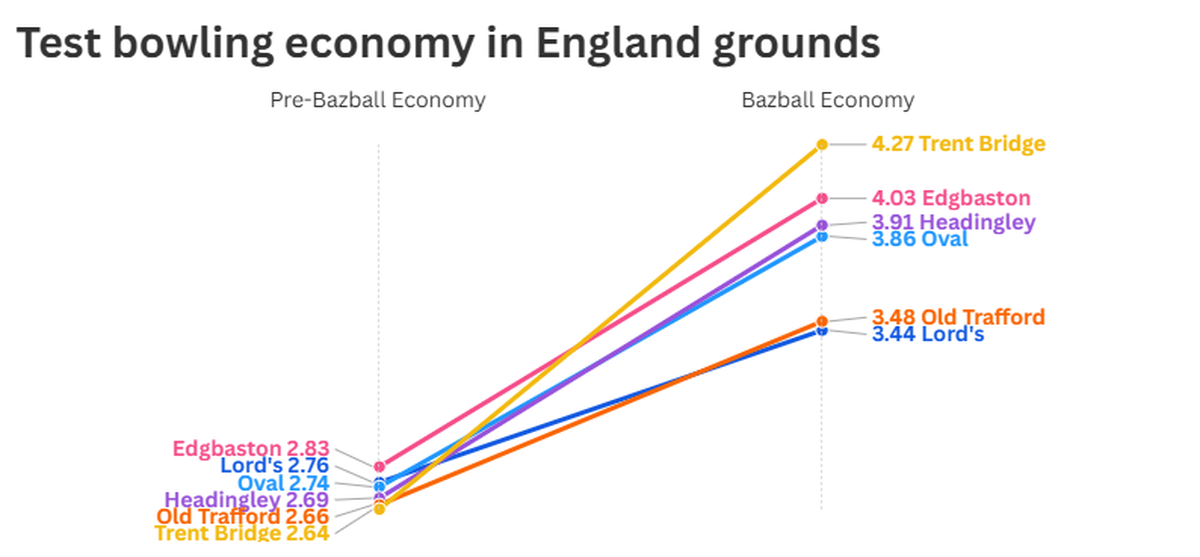
Ironically, Trent Bridge was the only major ground not to host a match during the Anderson–Tendulkar Trophy.
Nevertheless, the series was played on lifeless surfaces, unlike anything Indian batters have encountered in England in recent memory.
According to Cricviz, the average deviation for pace bowlers was just 0.562 degrees — the lowest for a Test series involving India in England since ball-tracking data began in 2005.
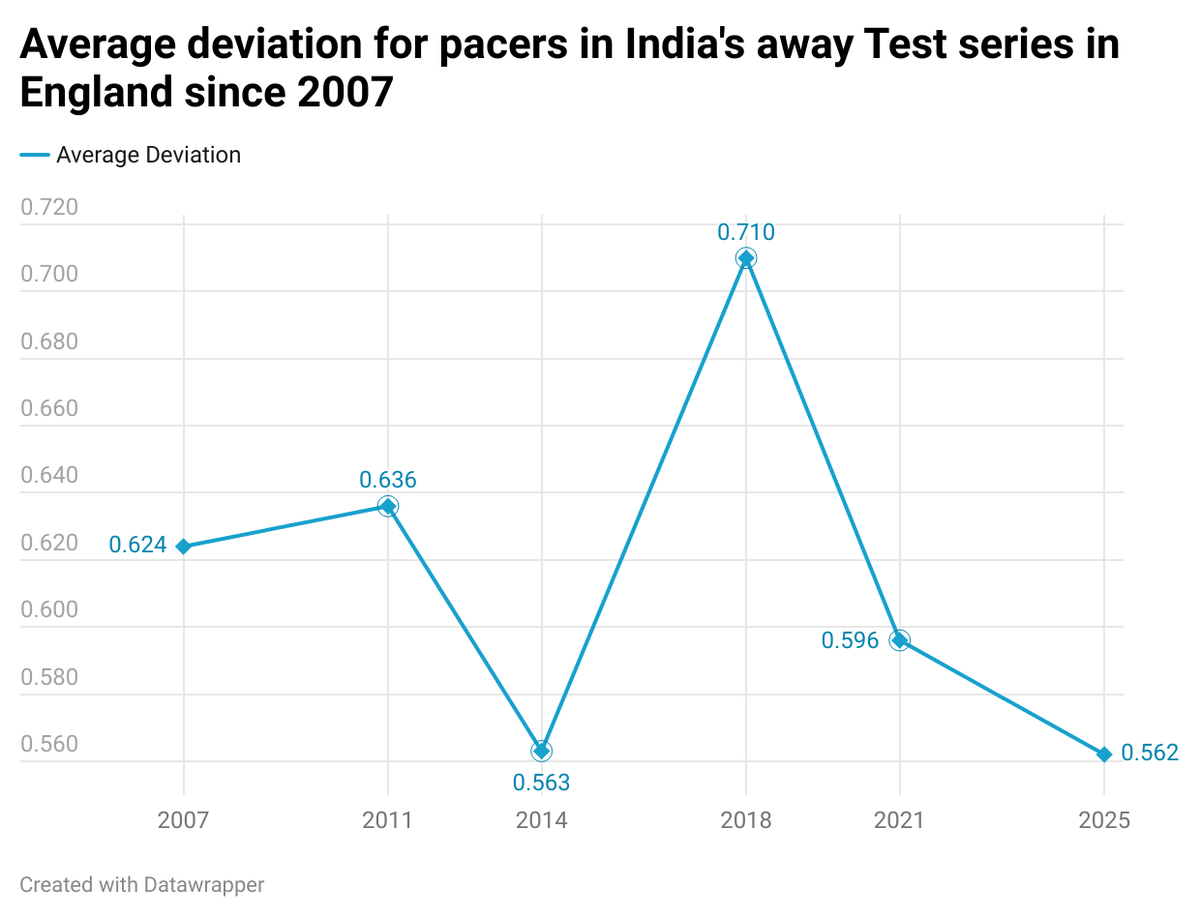
The average swing for pacers was 0.899 degrees, the sixth-lowest for any Test series in England of at least three matches.
Notably, three of the six lowest figures in that list have come during the Bazball era.
By prioritising maximum batting returns, England has enjoyed strong results at home under McCullum and Ben Stokes, not having lost a home series during this period, with 17 wins and only six defeats.
However, the tactic has not yielded series victories in the two marquee contests it has hosted in the last three years — the 2023 Ashes and the Anderson–Tendulkar Trophy.
While the batting-friendly conditions ensured relentless entertainment, they took a visible toll on the bowlers.
By the time the series reached The Oval, both teams were without their frontline pace spearheads — Jofra Archer and Jasprit Bumrah were rested for workload management, while Stokes was sidelined with an injury sustained from long, taxing spells earlier in the series.
Whether England’s policy of ‘dead-pitching’ opponents is sustainable remains an open question.

